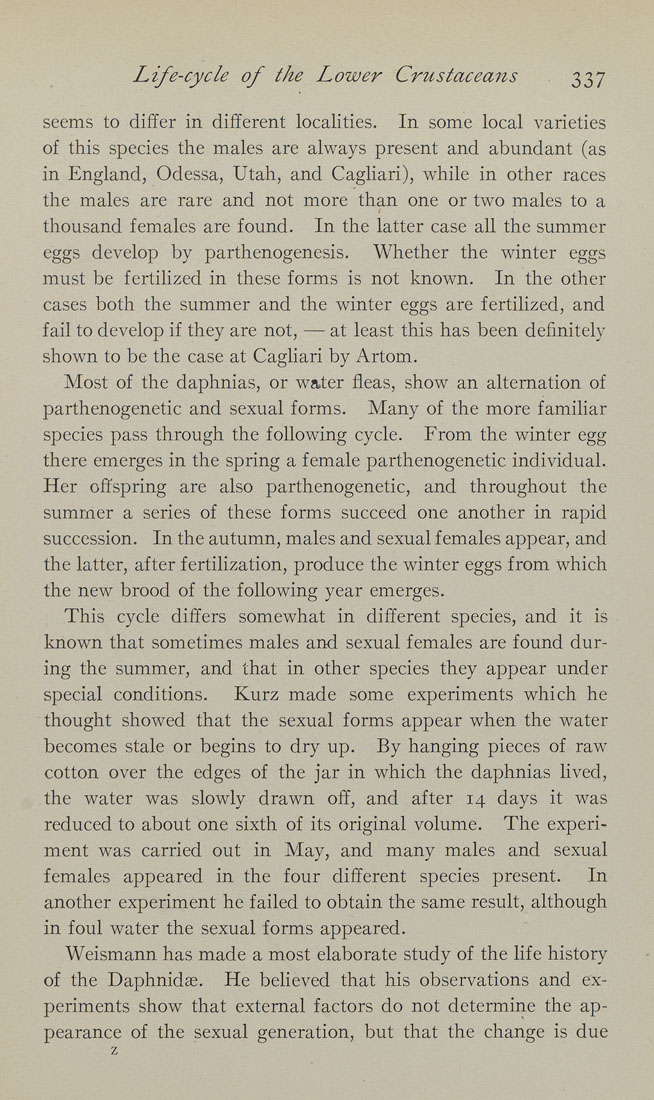Life-cycle of the Lower Crustaceans 337
seems to differ in different localities. In some local varieties
of this species the males are always present and abundant (as
in England, Odessa, Utah, and Cagliari), while in other races
the males are rare and not more than one or two males to a
thousand females are found. In the latter case all the summer
eggs develop by parthenogenesis. Whether the winter eggs
must be fertilized in these forms is not known. In the other
cases both the summer and the winter eggs are fertilized, and
fail to develop if they are not, — at least this has been definitely
shown to be the case at Cagliari by Artom.
Most of the daphnias, or water fleas, show an alternation of
parthenogenetic and sexual forms. Many of the more familiar
species pass through the following cycle. From the winter egg
there emerges in the spring a female parthenogenetic individual.
Her offspring are also parthenogenetic, and throughout the
summer a series of these forms succeed one another in rapid
succession. In the autumn, males and sexual females appear, and
the latter, after fertilization, produce the winter eggs from which
the new brood of the following year emerges.
This cycle differs somewhat in different species, and it is
known that sometimes males and sexual females are found dur¬
ing the summer, and that in other species they appear under
special conditions. Kurz made some experiments which he
thought showed that the sexual forms appear when the water
becomes stale or begins to dry up. By hanging pieces of raw
cotton over the edges of the jar in which the daphnias lived,
the water was slowly drawn off, and after 14 days it was
reduced to about one sixth of its original volume. The experi¬
ment was carried out in May, and many males and sexual
females appeared in the four different species present. In
another experiment he failed to obtain the same result, although
in foul water the sexual forms appeared.
Weismann has made a most elaborate study of the life history
of the Daphnidee. He believed that his observations and ex¬
periments show that external factors do not determine the ap¬
pearance of the sexual generation, but that the change is due
|








